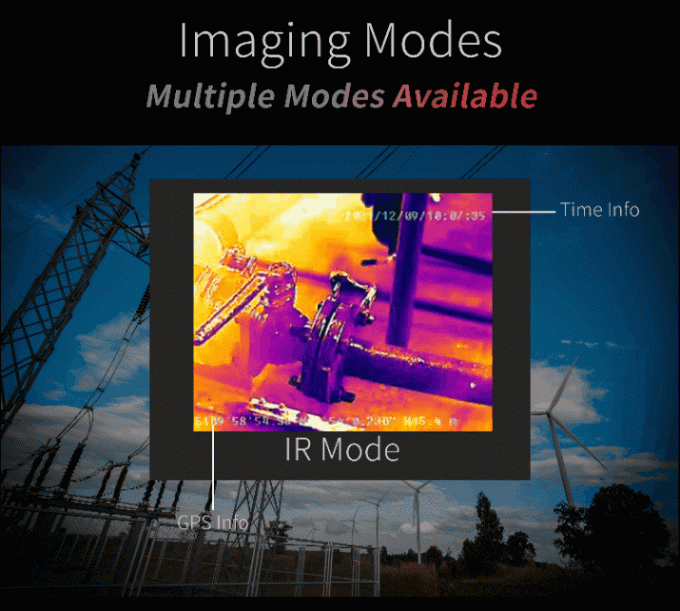In the journey toward environmental sustainability and ecological safeguarding, the identification of GHGs has turned increasingly crucial. One such gas is sulfur fluoride, often referred to as SF6, which is commonly utilized in electric insulation and numerous applications. SF6 is a potent greenhouse gas, with a capacity for global warming far exceeding that of carbon dioxide gas. As industries strive to lessen their environmental impact, the need for robust leak detection methods has never been more pressing. This is where the SF6 leak detection camera comes into effect.
An SF6 leak detection camera is a specific device developed to recognize and see leaks of this gas quickly and efficiently. By using advanced imaging technology, these cameras can find even the tiniest concentrations of SF6, helping staff identify leaks before they become significant issues. In this article, we will explore what an SF6 leak detection camera entails, how it operates, and the benefits it gives in maintaining safety and environmental norms in diverse industrial contexts.
Grasping Sulfur Hexafluoride and The Uses
SF6, or sulphur hexafluoride, is a colorless, odorless gas that is highly effective in insulating electrical equipment. Its unique properties render it an optimal insulating as well as arc-extinguishing medium in HV switchgear. This gas has a high electronegativity, which can successfully extinguish arcs while help preserve the stability of power grids. The impressive dielectric strength of SF6 enables smaller as well as more effective switchgear designs, eventually leading to more efficient energy management.
Due to its effectiveness, sulfur hexafluoride is commonly utilized in multiple applications in the electrical power industry. It is commonly found in gas-insulated switchgear, circuit breakers, and transformers. Utilizing sulfur hexafluoride helps power companies reduce space requirements, reduce maintenance costs, and improve safety protocols. In addition, the gas is utilized in other industries including particle accelerators and medical imaging devices, demonstrating its versatility beyond electrical applications.
Nevertheless, SF6 also presents environmental implications. This gas is a green house gas with a global warming potential substantially greater than carbon dioxide. As a result, regulations and public awareness regarding SF6 emission management have increased. This is where SF6 leak detection technologies, such as specialized leak detection cameras, assume a crucial role in ensuring the integrity of systems that utilize SF6 while minimizing its environmental impact.
Technology of SF6 Leak Identifying Devices
SF6 gas detection cameras utilize advanced imaging technology to identify leaks in systems using sulfur hexafluoride. These cameras are equipped with advanced sensors that can sense the specific infrared characteristics of SF6 gas. When the camera scans an area, it collects infrared emissions and turns them into visible images, indicating areas where gas may be fleeing. This targeted approach allows for quick and precise leak detection, minimizing potential ecological hazards.
The core technology behind these cameras often includes optics that are specially designed to sense the unique absorption characteristics of SF6. This gas has a specific molecular structure that alters its infrared radiation patterns. By focusing on this particular spectral region, SF6 leak detection camera s can differentiate between leaks and other environmental factors, ensuring that the detection process is not hindered by background noise. This precision is crucial in high-stakes environments such as electrical substations and gas handling facilities.

In addition to their accuracy and precision, SF6 leak detection cameras are designed for operational ease and effectiveness. Many models come equipped with instantaneous visualization capabilities and data logging features, allowing operators to analyze situations instantly and document findings for further analysis. The portability of these cameras enhances their practicality, enabling technicians to easily handle them in various settings, rendering them an invaluable tool in ensuring safety and compliance in industries that depend on SF6.
Benefits of Using SF6 Leak Detection Cameras
The use of SF6 leak detection cameras provides considerable gains in maintaining the integrity of electrical systems. By providing a clear depiction of leaks, the cameras allow for swift recognition of SF6 gas emissions, which is essential in stopping environmental harm. This innovation grants operators the capability to locate leaks without the need for hands-on interaction with risk-prone locations, augmenting safety and efficiency in service activities.
Moreover, lies in the improved operational efficiency these cameras bring to the monitoring activities. Traditional leak detection methods can be time-consuming and labor-intensive, often entailing significant checking efforts. In comparison, SF6 leak detection cameras enable fast analysis of extensive regions, greatly minimizing the time needed for inspections. This effectiveness not only reduces workforce but also lowers pauses in essential facilities, which ultimately results in greater efficiency.
Additionally, utilizing SF6 leak detection cameras aids in regulatory compliance and environmental efforts. Given increasing environmental regulations related to greenhouse gases, early leak detection helps organizations adhere to compliance requirements and reduce their carbon footprint. Through early detection of leaks promptly, companies can cut their SF6 emissions, thereby supporting wider initiatives to preserve natural resources while also ensuring their operational effectiveness.
